HPE ProLiant DL380T Gen10 Teardown
The server configuration we had was relatively lower-end in nature. Again, we had a single Intel Xeon Bronze 3204, 8GB of memory, a 10/25GbE NIC, and a 480GB SSD. Configurations can be higher-end, but this is what we had. Instead of looking at the performance or looking at the historical A Look at 7 Years of Advancement Leading to the Xeon Bronze 3204 (now 8 years as Ice Lake Xeons were delayed), we decided to go into full teardown mode.
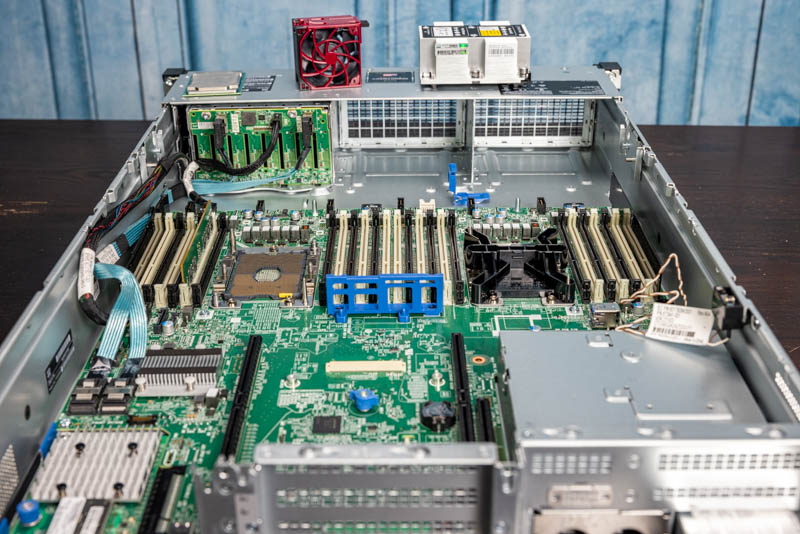
First off, in the front of the chassis, we can see the HPE Trusted Supply Chain sticker. For those outside of the US, Americans put flags on everything. If you did not know, it is a cultural nuance. Since HPE plans to bring this service to other regions outside of the US, our assumption is that this sticker will be customized for target markets.
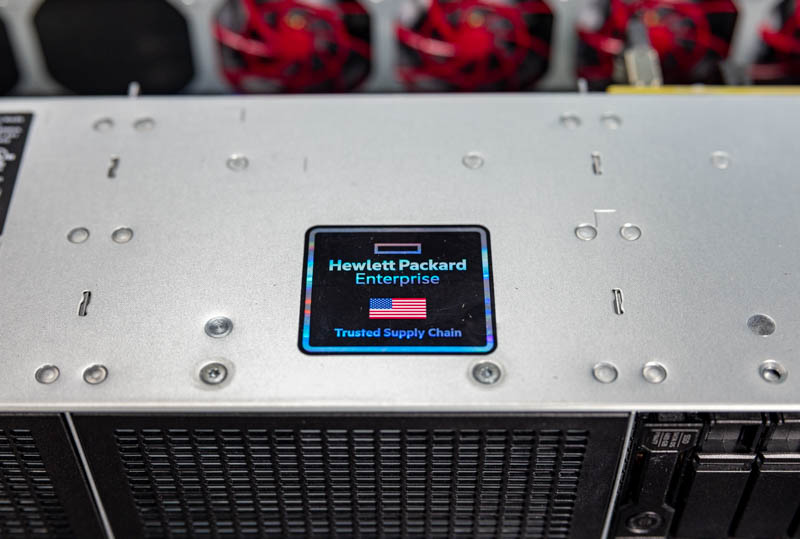
On the model designator, we have a HPE ProLiant DL380T Gen10 with the “T” added.
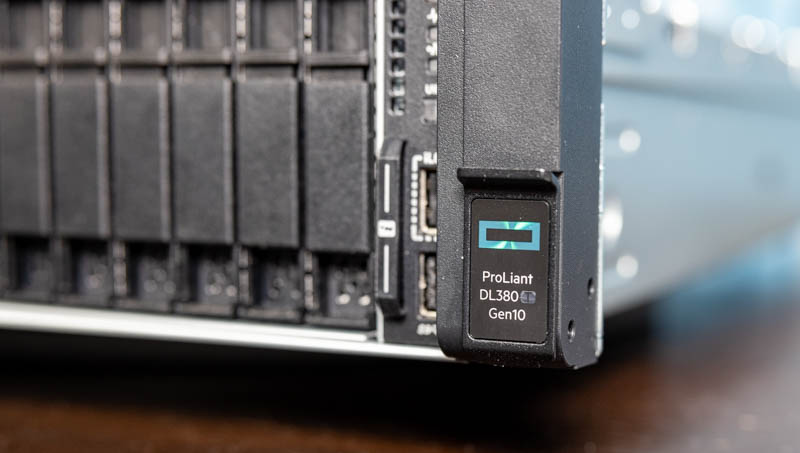
We can see the “MADE IN US (INCLUDES FOREIGN CONTENT)” on the label.
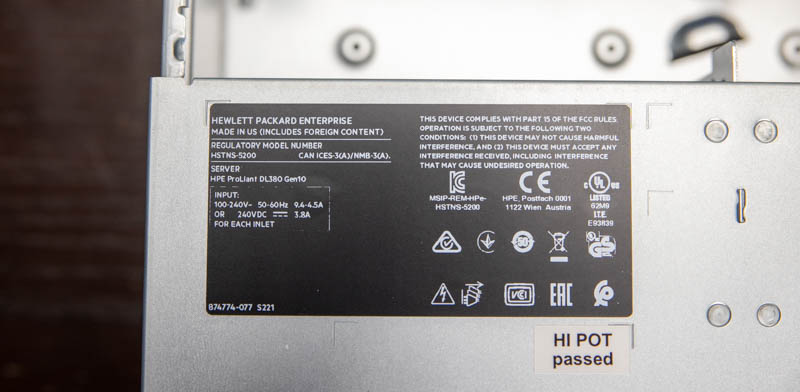
Aat the front of the chassis, our unit came with a 480GB SATA SSD from SK hynix. This drive comes from South Korea.
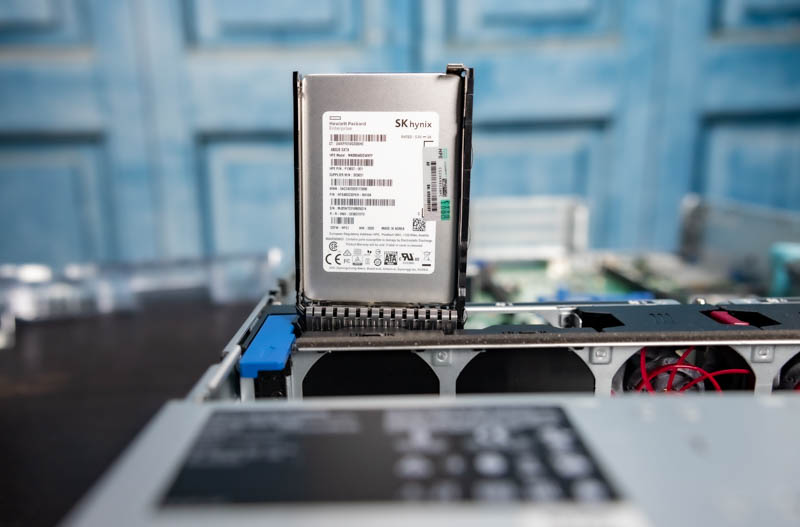
Opening the chassis we thought that perhaps the sheet metal would be made in the US to increase the US part content. It is labeled as being from China. We do very much like the printed service guide so we will continue to mention that until all vendors catch up to companies like HPE and make this standard.
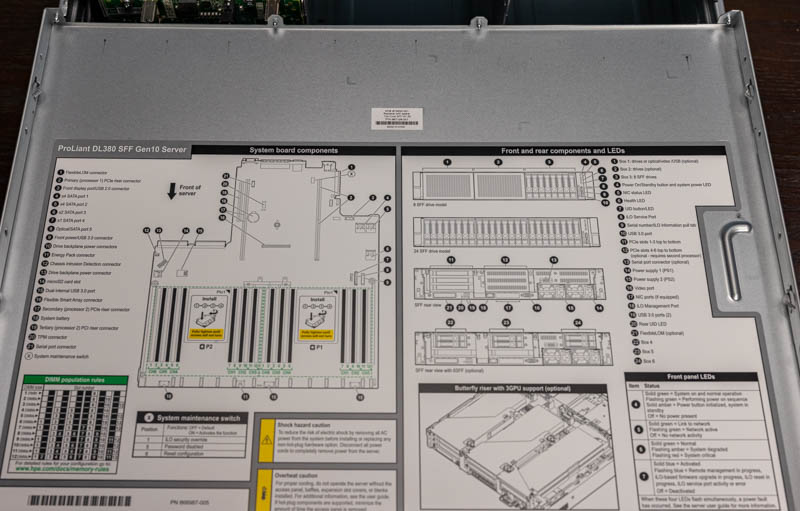
Having the chassis intrusion detection switch installed is part of the program. This can ensure that if the chassis is opened during transit or once installed highly-sensitive sensitive access can be discovered by detecting when the top cover is removed. We can see this is Made in China.
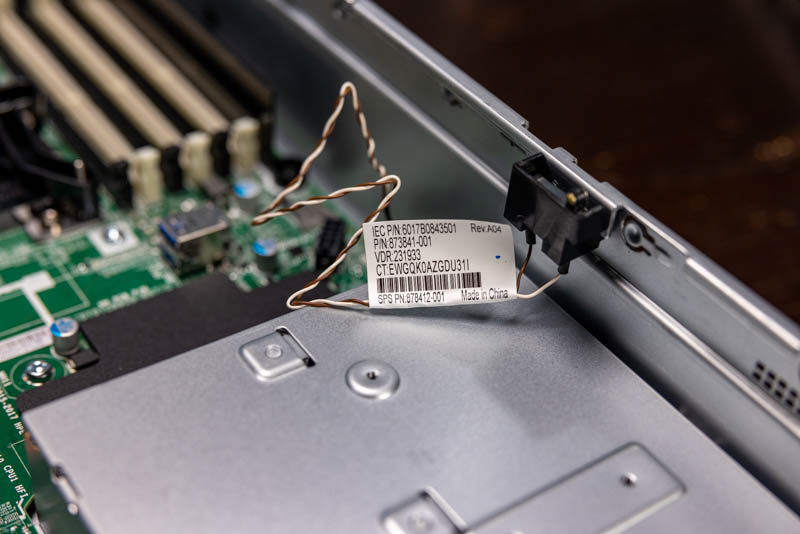
We wanted to quickly note in our recent Dell EMC PowerEdge R7525 Review we mentioned that Dell’s use of a 24-bay backplane was interesting since many companies use three 8-bay backplanes. HPE shows us a good example of a three 8-bay backplane setup with one installed in our test unit.
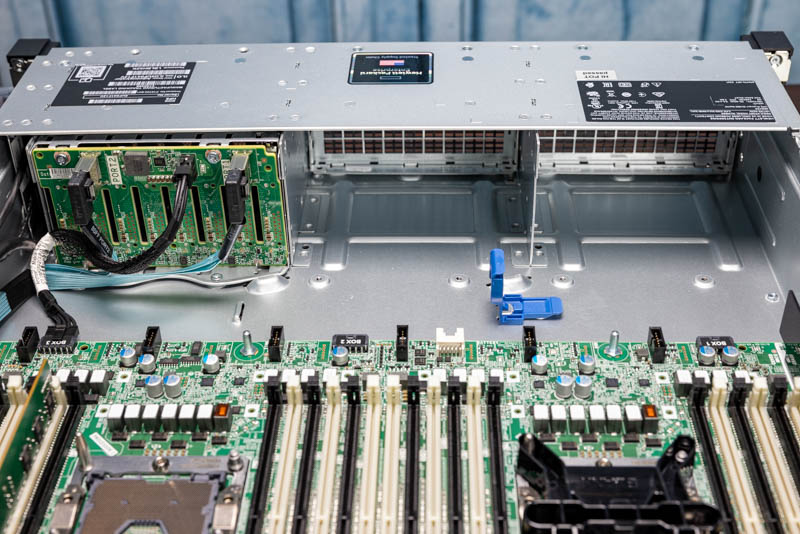
Both the label on the PCB backplane and on the power cable here state those parts are from China.
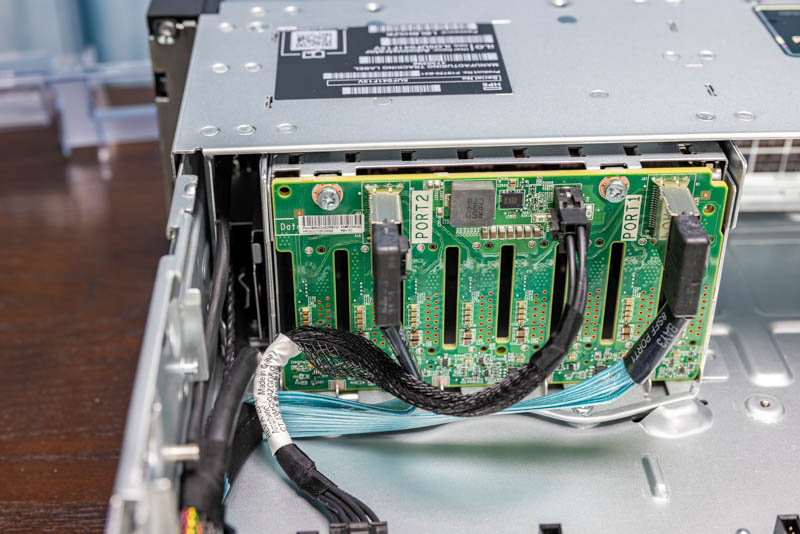
Likewise, the SFF data cables are Made in China as well.
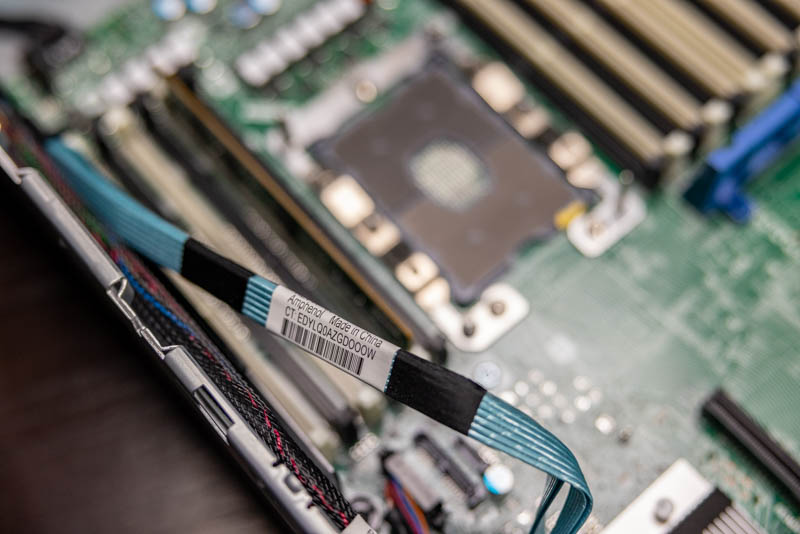
In that cable management area, we also have the front-panel cable bundle which is also Made in China.
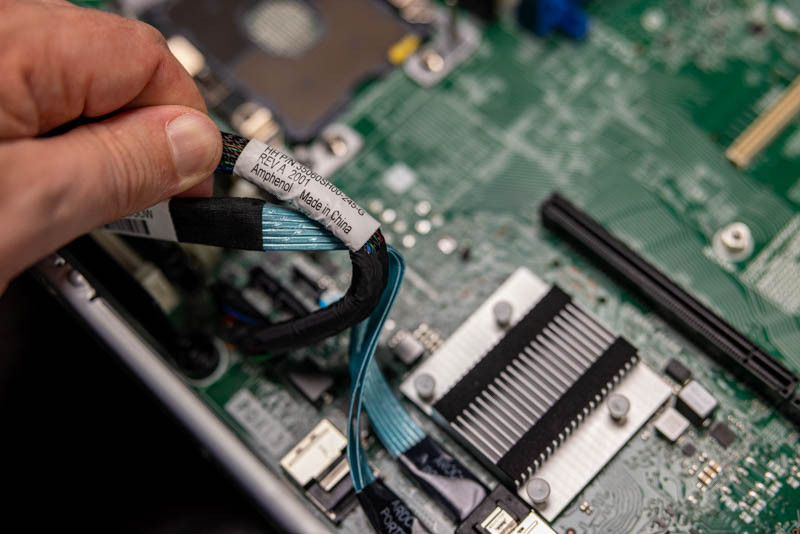
Behind those cables, we see the chassis identifier which shows us the chassis is Made in China.
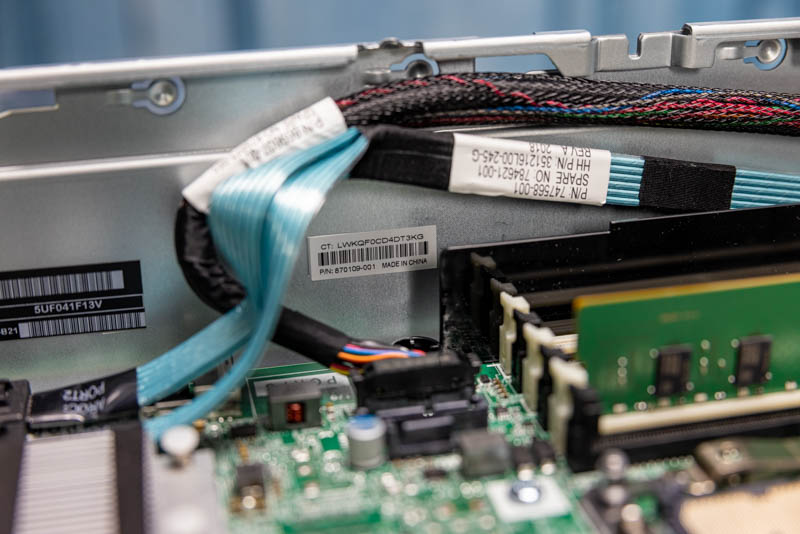
Next, we are going to get into additional components.




I don’t care about the metal and plastic. I do care about the drives, memory, processors, chips, PCBs, and other electronic parts like wires and fans. You went too far in the teardown.
Well this is very nice and all but let us have a conversation about BGP highjacking if we are all worried about what the funny chips that the evil forners put in our servers do.
@RunsackAL, while some have nationalist concerns about the origin of their products down to the smallest details, I would agree that an article addressing “Trusted Supply Chain” could probably ignore case “metal and plastic” parts (including PCB board).
So server comes from trusted supply chain and pcb is made in China? Is that a joke or two? Or has HPE really put the pcb under microscope and verified everything to the latest detail? Can’t believe this at all…
Patrick, in negativity against HPE put into previous comment I’ve forgotten to thank you for this wonderful article. That’s something I’ve been diging into recent months and it’s indeed highly complex task to get some meaning full information about the components country of origin from the hardware vendors. Servers are in the first battle line so I would expect way better job performed by HPE here, but the hell I got with notebooks is unbelievable too. Vendors freely claim that their notebooks are assembled in U.S.A. while it’s clear that this is ODM work done somewhere in China or in the best case in Taiwan etc. etc.
It’s really hard to source some components which has not been on mainland China…
I’d really appreciate if you would just enhance your future articles by single line or two mentioning also component/system country of origin. Would help a lot here. Thanks for all your great work!
Wowza. Thank you for doing this. This is a great level of detail.
US-made is the opposite of trust.
Looks like assembled in the US with some papers printed in the US. Once assembled, all transport is domestic which makes supply chain interruptions harder. Over time I wonder if they will start utilizing more North American supply sources for more of the platforms.
See the FTC website: https://www.ftc.gov/tips-advice/business-center/guidance/complying-made-usa-standard#Assembled%20in%20U.S.A.
Assembled in the USA.
I’m not going to pick on anywhere in this comment, but I wouldn’t want to pay extra for this configuration; I’d prefer to source my own motherboard.
Trusted Supply China